Prairie Island Indian Community powering seven generations with clean energy
February 2021

In early 2021, Prairie Island Indian Community Tribal Council President Shelley Buck and General Counsel Jessie Stomski Seim joined us to discuss Prairie Island’s energy story and how the Tribe fought for and won a $46 million appropriation from the Minnesota Legislature to support the Prairie Island Net Zero Project .
They share how tribal culture, seven generations, and storytelling motivate this work, outline the process that has led Prairie Island to this point, talk about their hopes for robust community engagement in the project’s next phase, and offer encouragement for other tribal nations considering ambitious clean energy work.
Photo: Prairie Island has grown their buffalo herd since 1992 to provide bison meat for community members.
Listen to the conversation or read it below.
Both the audio and write-up have been edited for length and clarity.

Prairie Island is an example of taking what is really forced upon them as a negative energy story as essentially a victim. They have turned around and put themselves in a place of power—a new story of energy that is going to be fantastic. That to me is a story of perseverance and courage.
Marie Donahue : Before we get started, we want to acknowledge that Minnesota, where we are recording this podcast and where our audience is largely based, is located on traditional, ancestral, and contemporary lands of Indigenous people. That these lands were cared for and called home by the Dakota, Anishinaabe, and Northern Cheyenne peoples, and other Native peoples since time immemorial.
With this land acknowledgment, we honor, respect, and affirm tribal sovereignty and will work to hold ourselves and our partners accountable to American Indian peoples and nations. Specifically, we’re looking forward to our conversation with leaders from the Prairie Island Indian Community today to support and raise awareness about the Tribe’s ongoing efforts to advance a clean energy future through the Prairie Island Net Zero Project .
Prairie Island Indian Community Tribal Council President Shelley Buck and General Counsel Jessie Stomski Seim, thank you both so much for joining us today and sharing the story of this exciting project. To start, could each of you introduce yourselves and share both the work that you do and how your backgrounds and paths led you to your roles representing the Prairie Island Indian Community?
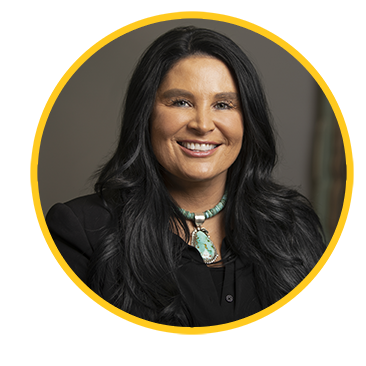
That's what we did. We moved up here about 14 or 15 years ago now. And I've worked for the Tribe or been on Council since I moved up here. I haven't worked for anyone else. My goal is, even if I end up working outside of the Tribe, I want it to be in a job where I can help push tribal issues and tribal concerns.

A lot of my desire to do this comes from my kids. My kids have taught me a lot. They’re really opening my mind to what can be. And the Tribe itself has been talking about solar panels and windmills for so many years that the idea of doing this larger project is so exciting. It's made me see the bigger picture.
Marie Donahue : Can you each describe your personal motivations and any experience you each have had working to advance energy and environmental justice-related projects or policy?
President Shelley Buck : I'm right on that cusp where people didn't really care—of the generations where people didn't really take into consideration the environment. All this stuff wasn't a thought. Now, this generation, it's really their thing. I'm somewhere in the middle. Growing up, we used to recycle newspapers, and that was all we did. We didn't do anything else or think about anything else. As I grew older, people started to recycle. Now, we recycle plastics and cans and papers.
Actually my knowledge—a lot of my desire to do this comes from my kids. My kids have taught me a lot. They’re really opening my mind to what can be. And the Tribe itself has been talking about solar panels and windmills for so many years that the idea of doing this larger project is so exciting. It's made me see the bigger picture.
Even with the community garden—we have a Green Team that does a lot of work with the [Treasure Island] Casino , as well as with composting and recycling. At the Casino, we were using products that were harmful to the environment, so the Council, we told the Casino, “Even though it costs more, it's time to get cardboard or paper containers for the food. It's time to start looking at more environmentally conscious products” Instead of what we have been using for many years.
Jessie Stomski Seim : I might be a bit unique among the guests on your show. I don't have a ton of environmental or clean energy experience, candidly. Before coming to Prairie Island, I worked in my legal career on issues that would raise environmental matters, but nothing head-on.
When I came to Prairie Island, the nuclear power plant, which the Tribe is literally under—about 700 feet from the nearest home—is the Prairie Island Nuclear Generating Plant and is located on the island that the Tribe is on. The history of what the Tribe faces is unique in the entire country. No other human beings are that close to nuclear waste or an operating nuclear plant. With Xcel Energy [which owns and operates the nuclear plant], there is not currently bad blood there. There's a relationship there. But the fact remains that this Tribe must bear the burden of that potential catastrophic event every moment of every day on their ancestors’ land and on where the tribe lives and breathes and operates its businesses today.
That was something that I, in order to represent them, had to quickly understand, and I'm continuing to learn about it. It's a big issue. Coupled with that is the opportunity for net zero, which we will discuss in detail today. This has really given me personally an opportunity to learn about this field and to try to expand the opportunity for Prairie Island and all tribes, hopefully, when looking at the bigger picture.
The history of what the Tribe faces is unique in the entire country. No other human beings are that close to nuclear waste or an operating nuclear plant. With Xcel Energy, there is not bad blood there. There's a relationship there. But the fact remains that this Tribe must bear the burden of that potential catastrophic event every moment of every day on their ancestors’ land and on where the tribe lives and breathes and operates its businesses today.
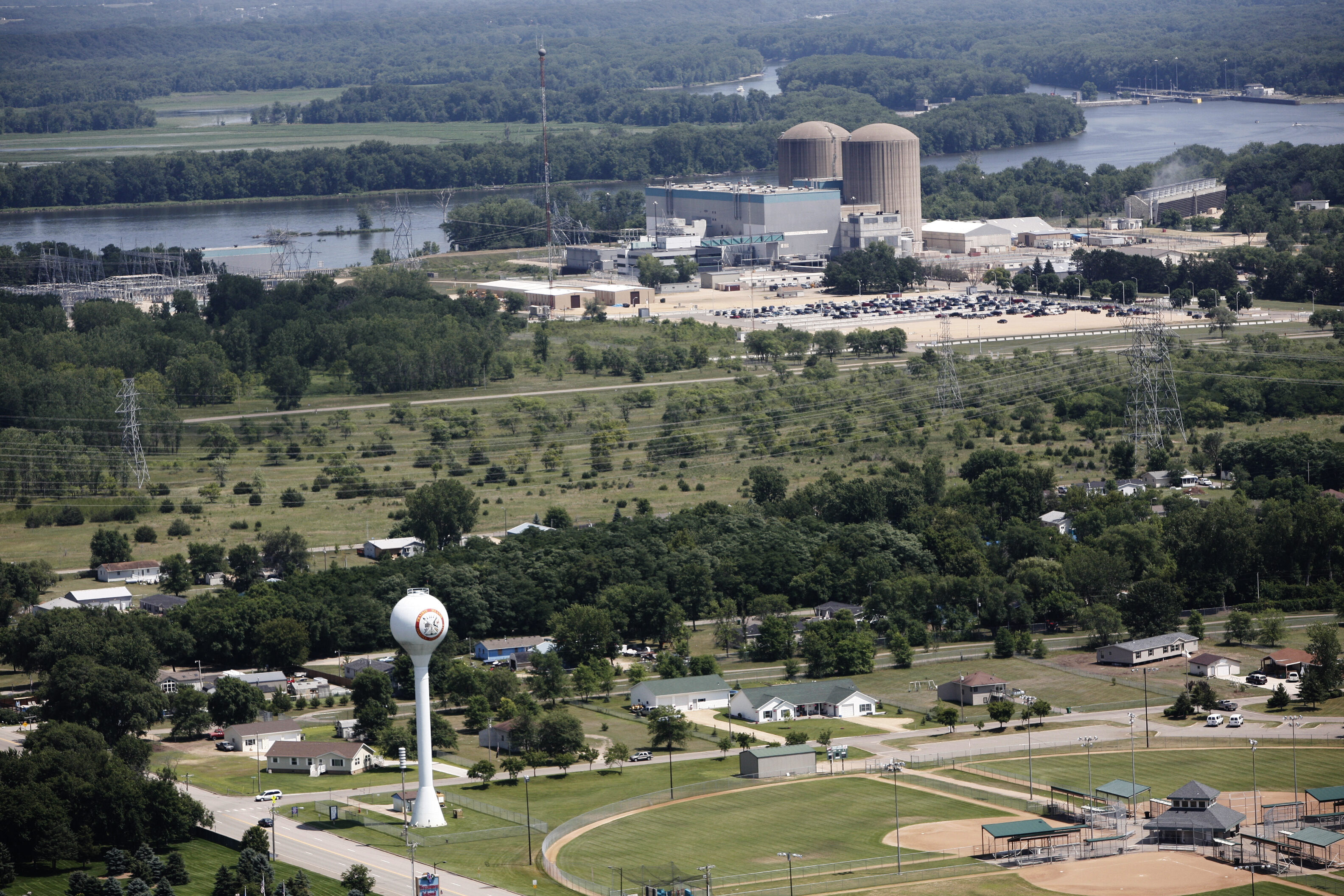
Photo: Located 30 miles southeast of the Twin Cities along the Mississippi River, the Prairie Island Indian Community is among the closest communities in the nation to a nuclear power plant and nuclear waste storage site, pictured here next to Xcel Energy’s Prairie Island Nuclear Generating Plant.
Marie Donahue : Wonderful, thank you for that context and introduction to this project and the motivations for it too. So, next we did want to dig into the main topic of today's conversation: the Prairie Island Net Zero Project .
President Buck you have said that this project “has the power to change the narrative and use energy production as a force for good.” How did the Tribe first come to envision and advocate for a net zero community? What values, narrative, or stories help ground this work?
Jessie Stomski Seim : This is the story of her people so President Buck, please go ahead.
President Shelley Buck : Thank you. We've been talking, like I said earlier, about different things that we could do. Little things that we could do on Prairie Island: solar panels on the casino roof, looking into windmills. We were looking at things like these back in my first term on Council, which was 11 or 12 years ago. At that time, it's amazing to see how far the industry has come in 12 years. We don't produce enough wind down on Prairie Island for windmills, plus there are some issues with windmills that as a native person I have concerns about. Then, solar panels at that time, our roof wouldn't be able to sustain the ones back then. They were too heavy. So, there were all these different problems. So, we said, “Let's just keep looking at this.” And each time we would look at different things and nothing really seemed to fit.
So as far as this [Prairie Island Net Zero] project, we are getting the money from the RDA [Renewable Development Account] fund —which used to be the RDF. We weren't able to apply for grants through that program before because we are not Xcel customers. It wasn't until a few years ago, when they changed the RDF to the RDA, that they included a provision where Prairie Island could apply for these funds, since we're the ones that are shouldering the majority of the burden for this. When we had the ability to do that, we started to think bigger : “Why don't we just become net zero and see what's involved with that?” We really got excited to look into it.
For us as Native people, it's our job to be stewards—good stewards of the land and the environment. We have a connection with everything. We don't just see the land as something we can farm. We don't see the animals as something we can shoot and eat. We have a connection with them. They each have their own soul, their own lives, their own spirit. To be able to help protect that, we're hoping that with this project we're able to come up with something that other people, other tribes, other areas, and other states look to for ways to improve how they treat the environment.
We only have one planet. Our job is to look out for the next seven generations. What are we going to leave the next seven generations? It needs to be something that they can survive on. And that’s currently not the case. It’s my job as a Dakota leader to look out for the next seven generations. Every decision I make has to take that into account. How is it going to affect the next seven generations? I know I keep saying seven generations, but it's that important. It has to be thought of.
This is just a perfect project for that. We're excited about it. Initially, I wasn’t sure because it's going to be a lot of work, and we don't have anybody that's really that experienced in this field. So I wondered what we were doing. But we are getting support. We had interviews with the top candidates and all of them gave me so much excitement to see where this can go. It’s cool, I'm excited for it now.
We only have one planet. Our job is to look out for the next seven generations. What are we going to leave the next seven generations?
Peter Lindstrom : Well, I tell you, it is extremely cool. As we started this conversation, there's been a lot of work done so far, including a lot of work at the legislature, to get the $46 million appropriated in the first place. I'd love to hear more about the negotiations that took place and the legislative process. Clearly a lot of work was done to be successful at the end of the day, with this $46 million appropriation.
President Shelley Buck : Jessie was our key negotiator on that front.
Jessie Stomski Seim : Well, there was a team of us. But to understand what happened there, it’s important to understand the context that President Buck laid out. The fact that for Prairie Island—a horrible energy story was forced upon them, in 1973 when the nuclear power plant was built without consultation, without discussion with the Tribe, whose homeland was that tiny island. And if you are a Tribal member or if you spend any time learning about the history of tribes, one thing you will know for certain is that the notion of environmental injustice is everywhere. This is a prime example of environmental injustice. I feel strongly that if this were to be the sighting of a power plant like this on top of a reservation—if that were to happen today, it would be a Standing Rock-type event. I would like to believe it would never happen again. I would like to hope that.
So that story—you can't tell the Net Zero story without that—because, as President Buck said this money was required to be put in the RDA to try to motivate us to not rely on nuclear power. The purpose of this was to generate new ideas—new sources of energy and innovation. There have been a lot of efforts to take money from that pot and use it for other things and that has increased in recent years.
Prairie Island became eligible to seek funds, but they saw this fund was being raided for purposes that were unrelated to the original goals. And so Prairie Island took it upon themselves to create a project that would benefit them—those who bear all of the risk or a lot of the risk of the nuclear power effort. To do something that was well within the parameters of the RDA, as so Prairie Island developed this concept that would change their energy story from that of a victim and from threat mitigation to an empowering story and an innovative story. One that will change the energy future for Prairie Island.
One of my favorite parts of this story is that Native people and tribes have always lived in harmony with nature and harvested from nature in all different ways to benefit our people and our communities. That is what I think the vision for the Prairie Island Net Zero Project is, as well. It's harvesting the resources of whatever it is—the sun, thermal, whatever will end up being in this project, but doing it in harmony. Doing it in a way that will help Prairie Island thrive.
I think it’s an opportunity to have a blueprint for Native communities and others, to go from, as President Buck, said from zero in this field or little bitty efforts to something much more cohesive or to a complete net zero system.
We brought all of these ideas to the legislature. We were clear that this wasn't a shovel ready project. We are very much in development and in the building blocks of this project now. I believe that the representatives saw in this an opportunity—not just for Prairie Island and not just to recognize the situation and this energy issue that the Island was facing—but that there are a lot of communities out there that need to learn how to go from zero to 100. This was an opportunity for the greater State of Minnesota and elsewhere to figure out how to do this, which was exactly what this pot of money with the RDA is for.
Those were part of the discussions. We had a lot of support at the legislature. We had a lot of great conversations, and a lot of excitement. It took a few sessions to get through it because we got caught up in some macro politics, and that's just the name of the game sometimes. But we really feel like we have a lot of supporters, a lot of believers, and a lot of partners at the State of Minnesota.
I believe that the representatives saw in this an opportunity—not just for Prairie Island and not just to recognize the situation and this energy issue that the Island was facing—but that there are a lot of communities out there that need to learn how to go from zero to 100. This was an opportunity for the greater State of Minnesota and elsewhere to figure out how to do this.

Photo: Prairie Island Indian Community Tribal Council President Shelley Buck, Vice President Lucy Taylor, and General Counsel Jessie Stomski Seim, among others, meet with Minnesota Governor Tim Walz and Lieutenant Governor Peggy Flanagan.
Peter Lindstrom : Fantastic, and I love how you alluded to how the solutions are not all set in concrete. There's going to be a process to find out how you can be more energy efficient or utilize renewables. Now that you do have the money secured, what are the next phases in this important project?
President Shelley Buck : We need to get the team on board that we're going to be consulting with and start the planning process. This project will start with getting the data from the past years, so the team can see what's going on. Then having community meetings with our community members, our tribal members, and others. We want to see what everybody wants and needs. We really want to include the community. It needs to be a community-based program. Just like with policing, when you have the community buy-in, it goes so much more successfully than if you hadn't. A lot of the time will be spent on that piece.
Of course, the COVID-19 pandemic makes that more difficult, but we'll have to be doing virtual meetings and maybe, if we can later do in-person meetings. If we’re able to space people out, or maybe they’ll have to sign up to be part of the group. We’d have different sessions for more people to be involved. I think that key community component is what's the most important right now.
One of my big things is to see an educational piece to this, for our younger people who would be or who are interested in this field. I'm hoping through this process, we’ll start to garner more support and more of our tribal members who are interested in it. That our younger ones will want to get an education or be a part of this and learn to be able to run the program once it's completed and to work in it. To do whatever repairs or maintenance that are needed to be done. I see this as a huge opportunity for all of us.
Then, once the planning is completed, we can get moving on finding vendors to make this plan a reality for us.
This project will start with getting the data from the past years, so the team can see what's going on. Then having community meetings with our community members, our tribal members, and others. We want to see what everybody wants and needs. We really want to include the community. It needs to be a community-based program.
Jessie Stomski Seim : To add a few more things, we ran a very robust RFP process for the main partnership that we see as our guide in the clean energy universe. It was a long process that we put a lot of time into. We hope anyone involved could say it was done with a lot of integrity and a lot of thought. It resulted in what we think is a great group of organizations that we hope to announce this week with a press release, who those partners are.
President Buck, I hope I'm not saying too much, but people will see that there was an emphasis on finding partners from Indian Country. That is something that we look to always do is empower Native-owned businesses to help us achieve new and exciting things.
We also hope to really focus on having local partners, as well as we continue to build a team and into the development of this project. We have a report due to the legislature, the skeleton of a report in July. That will be our next milestone and that will be something that we will be excited to share with everyone.
There was an emphasis on finding partners from Indian Country. That is something that we always look to do: empower Native-owned businesses to help us achieve new and exciting things.
After recording this interview, Prairie Island Indian Community announced the partners it selected to help advance the Prairie Island Net Zero Project.
As part of that announcement, President Buck noted, “We found partners that not only understand how to create the right energy solution, but they also understand Native culture and the importance of what this project means to our sovereignty and our future.”
Prairie Island will be working with a team led by Indian Energy and Chief Strategy Group , both Native American-owned companies, to help create an energy system for the Tribe that results in net-zero emissions.
Marie Donahue : President Buck, you spoke a bit to your visions for how this project might benefit the Prairie Island Indian Community, starting from community members and some of the households through education or job development, perhaps. But then, all the way to the Tribe at large. I'm curious, are there any of these categories of benefits that you hope to look at to measure the success of this program over time?
President Shelley Buck : Obviously I'd like to see this grow. It'll be steps obviously. We're not going to be able to get this all done in one swoop, but you know steps and hopefully once we get close to that in step. More things will come out in the industry, and we'll be able to continue this into more things, including the community-side on the individual homes and things to get our people to start thinking about ways that they can do things to their own homes to involve this. Whether they live on the reservation or not—that it's something that they can look for.
I'm hoping to see some programs for our kids, where even our younger little ones during summer school that we have every year, other than this past year with COVID. That they can do tours or or have little workshops, where they learn about this industry in fun ways. This isn't my side of the brain type of field. I think it's very exciting. I understand it just enough to be dangerous. But I want our kids to be able to see this as an exciting field for them to go into or just open their horizons. We get stuck in a tunnel sometimes, I think, as humans and when you're able to broaden into those fields. I think our kids will be able to see a whole different future for themselves, and who knows, maybe some of our kids will be the next people creating the new technology or the new whatever in this industry. I'm excited about it.
I'm excited not only for the potential for our Tribe, but for the entire nation—if nothing else to see what Indian Country can do with this and improve upon it. I want us to be the start, and allow this to help other people make it even better, to do more and be more and have more. I'm excited and can't say that enough.
I think our kids will be able to see a whole different future for themselves, and who knows, maybe some of our kids will be the next people creating the new technology... in this industry.
Marie Donahue : Jessie, anything you would add?
Jessie Stomski Seim : Just that there was a lot of excitement and support around this project, which is exciting to see. Tribes are doing a lot of cool things in energy, but we are not aware of this type of project happening [elsewhere], so we take that responsibility greatly and so do our partners. We know that there's a lot of stakeholders too. We know that there's a lot in the clean energy community, agencies of Minnesota, the people who voted for this—we know that this is something that a lot of people feel ownership for, and we want to honor that as well.
President Shelley Buck : I want to say thank you to everyone who has helped be a part of this. Even if it was a small part, Prairie Island didn't do this all on their own. We had to work with our partners at the state level and the legislature. We had to work with Xcel and Dakota Electric . They've all been so supportive and helpful. This is going to be, of course, a Prairie Island process and a Prairie Island project and success story. But it’s not just Prairie Island. It was a huge team effort. I always say it, but we have the best staff around, including our outside lobbying group. Everybody's been so great and they worked so hard on this. It’s been great to see that.
Marie Donahue : Thank you, is there anything more you’d like to add in how it’s helping the tribe reimagine what's possible in the future?
President Shelley Buck : I just think this is opening up a door that I personally never thought was there. A magical door that appeared that we’re now able to kick through. It's definitely opened my eyes to new things. As with our community garden and food sovereignty program, I see where this could even play into that. Where they can work together on even bigger and better things. We have a greenhouse with aquaponics that we're working on, and you know I can see that program expanding and doing more, and the possibilities are endless. I'm excited to see where we can take it and where our staff can envision new things, and our tribal members can experience or envision new things.
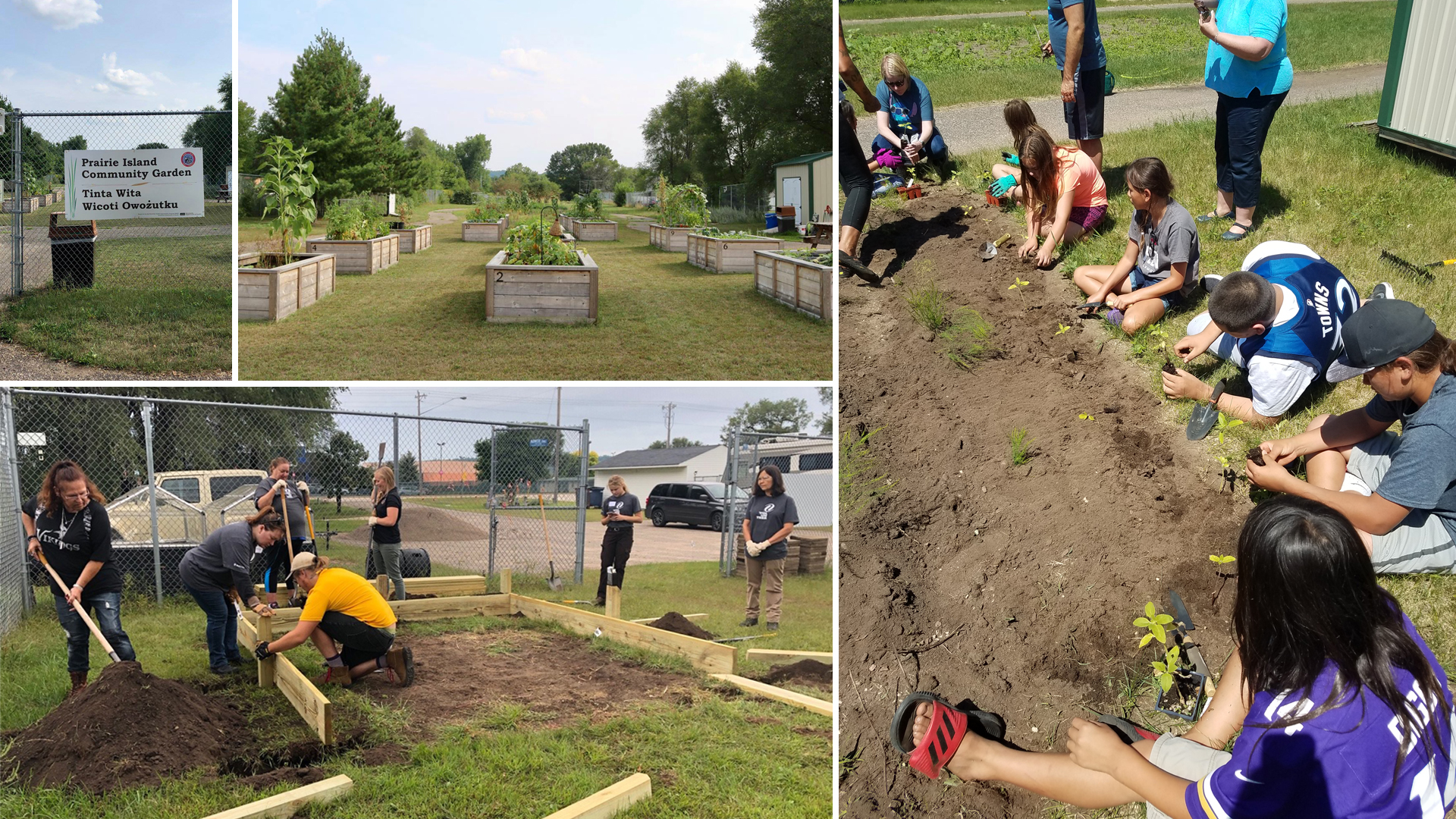
Photo: Prairie Island's Community Garden being built, growing, and educating local youth.
Jessie Stomski Seim : I would be excited to see how this develops into a true community-owned project. I think when you talk about community engagement anywhere, a lot of times that ends up looking like a bunch of staff doing the work and then having a meeting with the constituents and talking about it. Seeing if there are questions or feedback. I’m hoping we can find a different model here. One that really creates ownership, a participation, and an engagement that look different than that—that people can feel really good about.
President Shelley Buck : I second that. I would love to get more of our people involved in the actual work.
Peter Lindstrom : That's outstanding, and even though you're at the beginning of the process here, are there any lessons learned or best practices that you’ve utilized to date—either through the legislative process or running that robust RFP process? If you were talking to a local government or another tribal nation that you would share with them at this time?
President Shelley Buck : One thing I can see is don't think that you know everything or that you have to do everything. We reached out to Peter and to Xcel. No one would ever think that we would go to Xcel for help, or that they could help us with this measure, but you know we brought in partners to help us to develop the RFP process. Peter, you helped with the interviews, you asked questions that we may not know to ask because this isn't our field. We deal with so many different subjects. I can't know everything about everything, as much as I would love to and as much as I pretend like I do. You just can't, so I think you have to reach out to those people and get that extra support from experts in the field that can give you advice.
Jessie Stomski Seim : Through the process—we got the law passed, so what do we do now? We issue the RFP. There was a lot of thinking and a lot of work involved in every little step. Be prepared for a ton of work. I've done procurement processes that were very simple and this one was very robust. I'm really happy with the results of this, with the level of transparency and the level of communication that we had with everyone touching this all along the way. We had questions about, “How does Dakota Electric feel about this? The truth is, they have been a huge supporter, and you know I spoke to them yesterday. We've communicated the whole way. To reiterate what everyone knows, communication is key, and I feel good about where we're at in this moment and having communicated along the way, and hopefully that will continue throughout.
President Shelley Buck : And I would also add patience. You have to have patience with this. I'm one that when we get an idea, it’s: “Let's get it. Let's make it work. Let's get it finished. Let's go!” I would suggest that you take baby steps—baby celebrations. We've gone through the RFP process, the interview process, and we've picked our partner. That's a milestone for me that's something to go, "yay we did it," but just because I'm excited about it and I'm like, "yay," I know the job's not complete, I know that's just the small beginning, so you have to be willing to just have these tiny celebrations, knowing that you're in it for the long haul.
Marie Donahue : Great words of wisdom. If others were to take some of those and move forward into action, how do you hope this work and project, and the leadership that the Prairie Island Indian Community is taking to advance clean energy and energy sovereignty inspires action?
Jessie Stomski Seim : I hope that people will see that you don't have to be an expert in clean energy or in this effort in order to get started and hopefully make a change. That you can take on projects, as long as you're willing to learn and find those partners that can help you. That every city, every town, every business has to start somewhere—so don't let not knowing be a barrier to trying.
Number one for me is that Prairie Island is an example of taking what is really forced upon them as a negative energy story as essentially a victim. They have turned around and put themselves in a place of power—creating a new story of energy that is going to be fantastic. That to me is a story of perseverance and courage.
Photo, from left to right: Lieutenant Governor Peggy Flanagan, President Shelley Buck, U.S. Representative from Kansas Sharice Davids, Jessie Stomski Seim, and U.S. Representative from New Mexico Deb Haaland.
President Shelley Buck : And you can't be afraid to ask questions there's no stupid questions in this. So don't be afraid to ask questions, even if it's just a simple answer you got to be there's only one way to to know and understand and learn something and that's to ask questions.
Jessie Stomski Seim : Thank you for this opportunity. One of the things that's really important to us is storytelling. While you can see it [the Prairie Island Net Zero Project] as a project with its technology and big industry parts, to me, it’s just an extension of the Prairie Island story. I appreciate the opportunity to tell it from where we're at today.
Marie Donahue : We’re pleased to help in that process and to offer any other ways that we can help spread the word. On behalf of Peter, myself, and CERTs to say we are honored and grateful to be joined by you both, President Buck and Jessie, to share your perspectives and Prairie Island’s story with us today. Thank you for your time.
President Shelley Buck : Pidamayaye. Thank you!
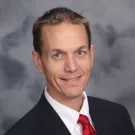
Ready to explore your tribe's clean energy future?
Tribal nations resources.
- Tribal Nations
CERTs is here to help you understand your options, connect with your peers, and move forward.
Best Practices for Cities & Tribal Nations
Public solar procurement, tribal nations stories.
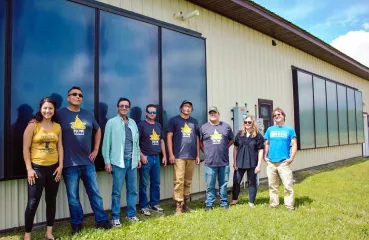
Young Anishinaabe at 8th Fire Solar are building the clean energy economy

Helping elders save energy, make their homes more safe and comfortable
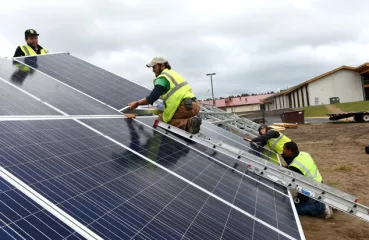
Leech Lake leads on renewable energy with Solar Master Plan
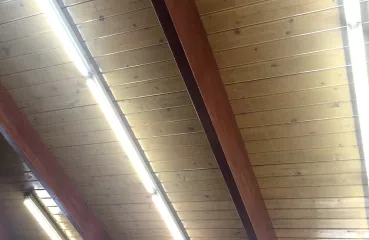
Round House community center a focal point for energy efficiency
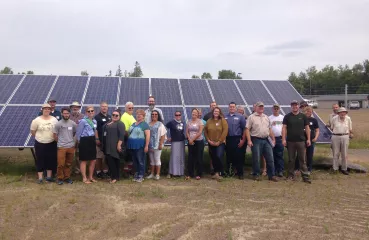
Fond du Lac Band offers tour of solar installations and green buildings
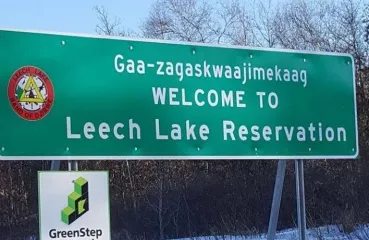
Tribal nations leading on sustainability join unique pilot program
Sign up for our newsletter, feel free to republish this story.
We encourage reuse and republishing of this story. All Clean Energy Resource Teams stories are made available under the Creative Commons Attribution license , meaning you can share and adapt the work as long as you give us credit. We'd also love it if you link back to the original piece. Have questions or want to chat? Drop us a line .
- Mission & Focus Areas
- CERTs Seed Grants
- Businesses & Organizations
- Cities & Counties
- Underserved Communities
- Community Planning
- Electric Vehicles
- Energy Efficiency
- Energy Storage
- Pay for Your Projects
- Solar Energy
- Wind Energy
- All Tools & Guides
Prairie Island Nuclear Power Plant - Minnesota
The Prairie Island Nuclear Power Plant is located on the Mississippi River near Red Wing, approximately 50 miles southeast of the Minneapolis-St. Paul metropolitan area. The facility, owned/operated by Northern States Power (NSP), has 2 units, each with a 2 Loop Westinghouse Pressurized Water Reactor . Each unit generates between 545 and 575 MWe, depending on time of year (depending on river water temperature and whether the cooling towers, described below, are operating). The Prairie Island units are operated as base-loaded (i.e. steady state of 100%). Together the 2 units generate about 20% of NSP's electrical energy demand requirements (equivalent to half of the residential demand of the system).
A number of simplified diagrams illustrate the the design of this pressurized water reactor plant (courtesy Westinghouse ) on the PWR Cycle page.
In the foreground of the photo on the right above are the Cooling Towers . Some power plants, usually located on lakes or rivers, use cooling towers as a method of cooling the circulating water (the third non-radioactive cycle) that has been heated in the condenser. During colder months and fish non-spawning periods, the discharge from the condenser may be directed to the river. Recirculation of the water back to the inlet to the condenser occurs during certain fish sensitive times of the year (e.g. spring, summer, fall) so that only a limited amount of water from the plant condenser may be discharged to the lake or river. During these times, the maximum temperature difference between the river water discharged to the river and the water upstream of the plant is restricted to 5 degrees Fahrenheit.
Mechanical draft Cooling Towers, as in the Prairie Island case, have long piping runs that spray the water downward. Large fans pull air across the dropping water to remove the heat. As the water drops downward onto the "fill" or slats in the cooling tower, the drops break up into a finer spray. On colder days, tall plumes of condensation can be seen. On warmer days, only small condensation plumes will be seen.
The NRC maintains a Plant Technical Book for the Prairie Island Unit 1 and Unit 2 with more detailed system descriptions and drawings.
Copyright © 1996-2004. Joseph Gonyeau, P.E. . The Virtual Nuclear Tourist . All rights reserved. Revised: March 15, 2001.

Serving the nuclear industry since 1956
- Advanced Reactors & Fusion
Prairie Island: a virtual pioneer
Xcel Energy is developing new virtual training tools as part of a dose reduction initiative at its Prairie Island nuclear plant. NEI learns more.
- Share on Linkedin
- Share on Facebook
IN FEBRUARY OF 2018, XCEL Energy’s nuclear business unit started using virtual reality (VR) and augmented reality (AR) as a training tool and as part of a highly effective dose reduction initiative.
VR creates a totally immersive simulation and AR overlays digital information onto the physical environment. The VR simulations are constructed using point clouds generated from colour sensitive laser scans and the AR environment is being constructed using an overlay of internet of things (IoT) data and electronic work instructions. These technologies have already begun to reduce training cost and worker exposure associated with dry cask fuel storage campaign at Prairie Island Nuclear Generating Plant, a two-unit, 550MW pressurised water reactor plant in Red Wing, Minnesota. The ultimate goal is to leverage these technologies to completely transform how training and work is performed throughout the Xcel Energy fleet.
“Prairie Island is driving the development of the technology and associated processes for Xcel Energy at large,” says Brad Boyer, radiation protection manager at the plant. “Once they are mature, they will be deployed outside of the nuclear business unit into the wider Xcel fleet.”
As the speed of technology advances and VR/AR costs continue to drop, learning is changing into an experiential process. Immersive learning environments and gamification are expected to reduce training times by 10-15%, with an overall cost savings of 40%. Previous tools used web-based applications to create virtual plant tours with links to various information sources (eg equipment sensors, radiological surveys, live video feeds, etc.). Xcel Energy’s work will transform this into true VR/AR to realise an immersive learning and work environment.
Prairie Island, which has already been recognised for its use of cadmium zinc telluride (CZT) monitoring as a dose reduction initiative, says VR/AR can be integrated with the CZT spectroscopic imaging detector. This instrument takes a visual image and overlays it with a radionuclide specific heat map (pictured far right). This information can be loaded into either the VR/AR environment to produce a visual means of communicating radiation fields and can be leveraged for ALARA planning, pre-job briefings, mockups, and in the field.
VR-based training for fire brigades has been an emerging technique for the non-nuclear industry and allows the effects of toxic gasses, heat, and other visible factors to be simulated without putting the trainee into physical danger. These techniques will be used to teach nuclear fire brigade personnel the proper protocols for various station conditions. The methods can also be used to train instrumentation and control technicians by guiding them through procedures like relay replacement and testing. Virtualising procedures, manuals and information sheets, will improve trainees’ retention and provide immediate feedback on correct work techniques.
Paperless work orders and the use of tablet computers in the field is the beginning of a mobile work management revolution. The end state is AR implementation, where personnel have safety glasses that can guide them through step-by-step diagnostics or cross reference a component that is about to be operated against the current procedural step and provide immediate independent verification. However, VR/AR technologies present several challenges unique to the nuclear industry, including cyber security, safeguards information and regulatory compliance. The recent revelations of state sponsored hacking of nuclear systems places increased scrutiny on these issues and the development of this technology will require ‘cradle to grave’ support from security experts. AR implementation requires precise overlay integration, otherwise it can become a cause of error and introduce a hazard into the work environment. There is a generational discrepancy in embracing VR and AR technologies with line employees. Older employees are more apt to dismiss the technology as a gimmick. Younger employees are more willing to embrace it, and point out more subtle problems. High quality VR/AR tools have to be intuitive and bug free. Careful management of these risks will ensure that the enormous benefits of an immersive learning and work environment are realised.
Xcel Energy’s work in VR/AR has demonstrated that these technologies are versatile and that their use can produce an immediate return on investment. Now the utility plans VR integration of touch sensitive gloves, and a move to AR-supported field work with a virtual field presence for subject matter experts.
VR/AR is providing a more efficient work environment, reducing training time, improving knowledge retention, decreasing human performance errors and leading to significant dose reduction at Prairie Island.
Sign up for our weekly news round-up!
Give your business an edge with our leading industry insights.
Partner Content
General atomics electromagnetic systems, tyne usa inc, meggitt sensing systems, more relevant, scada as you’ve never seen it before, anti-nuclear antidote, let the people speak, improving resilience of india’s fleet, sign up to the newsletter: in brief, your corporate email address, i would also like to subscribe to:.
I consent to Verdict Media Limited collecting my details provided via this form in accordance with Privacy Policy
Thank you for subscribing
View all newsletters from across the Progressive Media network.
- Equipment/ Tool Request
- Members Only

Nuclear Energy Tribal Working Group tours Prairie Island
Author: Lisa Kuehl
April 16, 2015
The Prairie Island Nuclear Generating Plant hosted the Nuclear Energy Tribal Work Group (NETWG) for a plant tour and presentation March 31 in conjunction with a meeting held between the group and the U.S. Department of Energy.
Members of NETWG received a presentation on the generation of nuclear power, a view of the Independent Spent Fuel Storage Installation (ISFSI) pad and were given a tour of the plant. Terry Pickens, Xcel Energy director of Nuclear Regulatory Policy, gave briefings on nuclear energy and status of regulatory issues. The group discussed the joint efforts between Xcel Energy and the Prairie Island Indian Community regarding the Nuclear Waste Strategy Coalition and federal action on used fuel storage.
The Prairie Island Indian Community, members of NETWG, is a Mdewakanton Sioux Indian reservation located adjacent to the Prairie Island plant.
“There is a long history between these Tribal Nations, the federal government and the utility industry,” said Pickens. “We have shared priorities and a working group such as this is a good way to deepen our relationship and take steps toward our common goals. We appreciate the opportunity to have them tour our facilities.”
The NETWG is a forum established in 2014 by several Tribal Nations and the U.S. Department of Energy. It provides a forum for Tribal Leaders to engage with the Department on a wide scope of nuclear energy issues. The forum works to strengthen government-to-government relations on matters such as the management of spent nuclear fuel and high-level radioactive waste – including transportation and related emergency response planning activities, nuclear research and development, small modular reactors, and potential economic business opportunities.
“Through the Nuclear Energy Tribal Working Group (NETWG) the Department hopes to incorporate the unique and important perspectives from Tribal Leaders and their representatives as we continue to develop and deploy safe, reliable, and efficient nuclear power,” said Jay Jones, senior advisor/tribal liaison in DOE’s Office of Nuclear Energy. “These types of partnerships help the Department to work more closely with the Tribal Nations on building a sustainable energy future.”
“I have been quite pleased with the progress made in the NETWG interactions, which explore a number of critical nuclear energy matters that affect both Tribal Leaders and the development of this energy source, including the management of spent nuclear fuel and high-level radioactive waste, transportation and related emergency response planning activities, nuclear research and development, small modular reactors, and potential economic business opportunities. I look forward to the next steps from this working group and further strengthening this important relationship in the years to come.”

- Skip to Main Content
- Skip to audio player to listen live
Enter the username on file and we'll send you a code to reset your password.
A verification code has been emailed to
Xcel Energy proposes to keep operating nuclear plants until early 2050s

Create an account or log in to save stories.
Thanks for liking this story! We have added it to a list of your favorite stories.
Xcel Energy is proposing to keep operating its two Minnesota nuclear plants until the early 2050s.
In a resource plan filed with state regulators on Thursday, the Minneapolis-based utility also proposed adding new wind and solar energy and battery storage. It also calls for adding more “always available” energy — likely natural gas — to provide backup electricity during times of peak demand.
Ryan Long, president of Xcel in Minnesota, North and South Dakota, said Xcel is on track to reduce its carbon emissions by as much as 88 percent by 2030, from 2005 levels. The utility previously had announced a goal of being carbon-free by 2050.
“We see this plan as really charting a path towards delivering on that vision,” he said. In addition, a new Minnesota law requires utilities to get 100 percent of their electricity from carbon-free sources by 2040.
Support Local News
When breaking news happens, MPR News provides the context you need. Help us meet the significant demands of these newsgathering efforts.
In Minnesota, large utilities are required about every two years to file an integrated resource plan, which outlines how they plan to generate electricity for the next 15 years. Xcel is Minnesota’s largest electric utility, serving about 1.3 million customers in the state.
Its latest resource plan calls for extending the life of its two nuclear units at Prairie Island by 20 years, until 2053 and 2054. It wants to extend the Monticello nuclear plant’s license to 2050.
Long said the nuclear plants are critical to providing reliable, carbon-free energy for Xcel’s Upper Midwest customers.
“We’re really confident that they’re positioned well to continue operating and doing so for our customers past 2050,” he said.
New generating facilities
The plan doesn’t change Xcel’s timeline for shuttering its remaining coal plants in Minnesota by 2030. It also calls for adding 3,600 megawatts of new wind and solar facilities and 600 megawatts of battery energy storage.
That includes a planned iron-air battery project in Becker, which will store energy produced by a large solar project Xcel is currently building.
“This is going to be one of the first resource plans where we’re actually proposing to build battery storage in the action period of our plan in the first five years,” Long said. That also could include lithium-ion batteries, he said, although the plan doesn’t specify locations.
Xcel’s plan also calls for adding more so-called dispatchable energy that can backup renewable sources when they’re not available. The utility previously proposed building two natural gas combustion cycle plants in Lyon County and Fargo, N.D.
“We don’t expect them to run very often,” Long said. “They will sit on our system and provide needed energy on the hottest days of the summer and coldest days of the winter, when we really need them for critical reliability.”
Clean energy advocates have supported Xcel’s plans to move away from burning coal toward carbon-free energy sources, such as wind and solar.
“We are very excited to see the larger amount of investment they've proposed in battery storage,” said Isabel Ricker, clean electricity program director with the nonprofit advocacy group Fresh Energy. “That’s a really important tool in our decarbonization toolbox.”
However, some environmental groups have questioned the need for new natural gas plants, which they argue will produce carbon emissions and won’t be needed as clean energy and storage become more affordable.
Ricker said Fresh Energy will be looking into whether Xcel could meet that peak demand with its other gas plants, or through a combination of renewable energy, battery storage and programs that encourage customers to shift their energy use to times when demand isn’t as high.
“The more money we put into a new fossil resource, we’re going to be paying for that for at least 40 years,” Ricker said. “And it might be money we would be better off spending on a carbon-free resource.”
More review
The resources plan requires the approval of the state Public Utilities Commission, after public hearings and extensive review. Extending the licenses of the nuclear plants would also require federal approval.
Whether the aging nuclear plants can continue to operate safely for another three decades is likely to be a point of debate. Also, extending the lives of both plants would require additional long-term storage of radioactive nuclear waste.
The two units of the Prairie Island plant near Red Wing have been operating since 1973 and 1974.
The Monticello plant, about 40 miles northwest of the Twin Cities, has been operating since 1971. Xcel is already seeking an extension of the plant’s federal license, which is set to expire in 2030.
In Nov. 2022, a broken pipe at the Monticello plant caused a leak of water containing tritium, a mildly radioactive form of hydrogen that occurs naturally in the environment, and also during nuclear power production. The utility didn’t make the leak public until March, although it did notify state and federal officials.
Xcel said the leak may have started a few weeks earlier than it first reported, and released between 750,000 and 900,000 gallons of tritium-tainted water, about double the amount it originally estimated. It temporarily shut down the plant in March to repair the leak. Xcel and state health officials have said there’s no imminent public health risk.
- Thousands of people live downstream from dams, yet many may not realize the risks
- Mississippi River sheens mystery solved: They came from the Coon Rapids Dam
- Sphen, partner in a same-sex penguin couple, dies — and a colony sings
Xcel Energy wants to extend life of Prairie Island nuclear facility, add two gas plants
The company’s latest blueprint for generating electricity will be scrutinized by state regulators and outside groups as Xcel seeks to meet Minnesota’s carbon-free law.
By Walker Orenstein
Xcel Energy on Thursday said it wants to extend the life of its Prairie Island nuclear power plant by 20 years as well as significantly invest in large-scale battery storage and build two natural gas plants.
Along with investing even more in wind and solar plants, the long-term energy blueprint could significantly speed up the Minneapolis-based company’s transition to a carbon-free footprint. If approved by Minnesota regulators, it also would drive a massive infrastructure investment.
The company declined to provide a cost for the plan, although many of the proposed projects could cost tens of millions of dollars.
While customers would foot part of the bill, Ryan Long, president of Xcel’s Minnesota operations, said the plan would likely result in an average rate increase of less than 1% per year. He said the company expects to fund the improvements with $5.7 billion in anticipated savings in tax credits tied to the landmark federal Inflation Reduction Act.
The proposal comes at a pivotal moment in the energy transition for Xcel, which has begun retiring its coal fleet and will shutter its last unit by 2030, pushing the company to replace that steady power generation with renewables and keep its three nuclear units running.
“We’re expected to exceed 80% carbon reduction by 2030, reaching potentially up to 88%,” Long said.
Minnesota has set 2040 as the benchmark year to be carbon-free.
Isabel Ricker, director of the clean electricity team at the nonprofit Fresh Energy, said Xcel’s plan would represent “quite good progress” toward the carbon-free standard. She praised much of the plan while reserving judgment on the new natural gas plants.
Large utility companies file these plans with the Minnesota Public Utilities Commission (PUC) every few years to outline how they will meet energy demand over the following decade and a half. State officials and outside groups will scrutinize Xcel’s initial proposal, and the PUC must approve a final plan before it can take effect.
The PUC has approved many wind and solar projects for Xcel and OK’d a 10-year extension of the company’s Monticello nuclear power plant until 2040.
The utility had previously signaled it hoped to keep its two units at Prairie Island running for an extra 20 years after licenses expire in 2033 and 2034. Last year, it applied to federal regulators for another 10-year extension to 2050 for Monticello. But Xcel had not officially asked regulators for the Prairie Island extension until now and still needs federal approval.

Related Coverage
Long said Prairie Island has been “exceptionally reliable” and is a “really critical part of both our carbon initiatives and [grid] reliability for customers.”
The company’s nuclear fleet provides about 30% of power generation for customers in the Upper Midwest.
Beyond the Prairie Island plant, Xcel said that by 2030 it would seek 3,200 megawatts of new wind, 400 megawatts of large-scale solar and 1,000 megawatts of solar from other sources, including small-scale community projects.
The company also hopes to add 600 megawatts of battery storage by 2030, which would be a notable short-term expansion in that sector. For example, Long said the 600 megawatts would be the first battery storage Xcel would add aside from its plans for a novel 10 megawatt, 100-hour battery system at its Sherco energy complex in Becker.
“We’ve certainly been paying attention across the industry and feel like we have a really good understanding of how to incorporate batteries onto our system,” Long said. “Also the economics of battery storage have also improved.”
Ricker said she was glad to see the amount of storage Xcel plans to build and on a faster timeline than in previous proposals. “That’s definitely a gap that we were looking to see them fill.”
Another addition would be 2,200 megawatts of what Xcel called “always-available” power by 2030 to back up renewable power that can fluctuate when the wind isn’t blowing or the sun doesn’t shine — or when energy demand is at its peak. Long said that, for now, is natural gas.
Last week, the company proposed building a gas plant in Cass County in North Dakota and another in Minnesota’s Lyon County; they would begin operating in 2027 and ′28. Both would generate more than 400 megawatts. Xcel had raised that idea before, but regulators did not weigh in when approving the utility’s last resource plan in 2022.
Long said the carbon impact of the plants would be muted because they would mostly sit idle and largely run on the hottest and coldest days of the year. The two gas plants would be able to use up to 30% hydrogen right away.
But Xcel envisions having natural gas on its Upper Midwest system in 2040. The company wrote in regulatory filings that it will still be compliant with the state law, which it says requires Xcel by 2040 to “generate or procure an amount of carbon-free energy equivalent to their Minnesota load.”
Ricker said Fresh Energy will want to research whether there’s a cleaner option for grid reliability purposes than the gas plants.
At the end of last year, Xcel took a major step in its transition away from coal, shutting down a large unit at its enormous Sherburne County Generating Station. As part of its wind and solar rollout, Xcel is also building one of the country’s largest solar complexes at Sherco.
Xcel is Minnesota’s largest electric utility, serving 1.3 million customers in the state.
about the writer
Walker orenstein.
Walker Orenstein covers energy, natural resources and sustainability for the Star Tribune. Before that, he was a reporter at MinnPost and at news outlets in Washington state.
More from Business
Minneapolis hopes a tougher vacancy policy will clean up its most stubborn nuisance properties.
The new ordinance imposes a time limit and higher fees on property owners holding on to vacant buildings.
Ramstad: At the gas station for Minnesota’s gas stations, an emergency came at a bad time
A sizable portion of the Pine Bend Refinery was closed for maintenance last fall when a critical process unit crashed.
After years, balance of power in Twin Cities housing market slowly tips toward buyers
More listings and fewer sales are giving a bit of control back to house hunters after more than a decade of sellers being in command.

- Environmental Leadership
- Customer Experience
- Operational Excellence
Pioneering a bridge between nuclear and a hydrogen economy
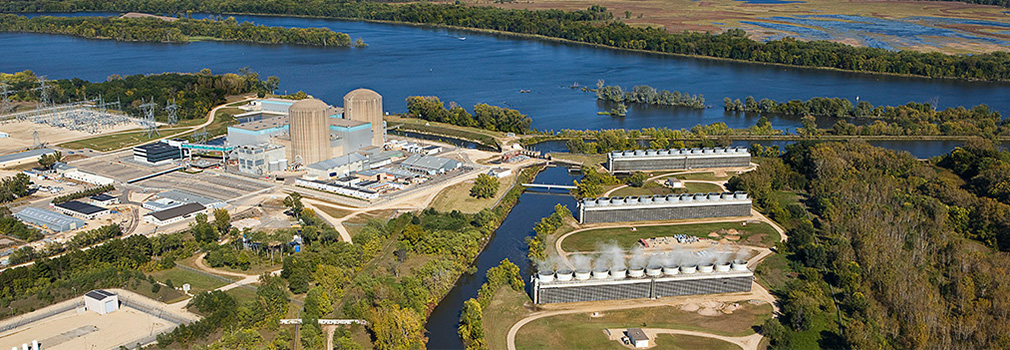
A new frontier for nuclear energy in the United States is under exploration , and Xcel Energy is at the forefront with a project t o produce hydrogen at its Prairie Island plant near Red Wing, Minnesota .
The company is work ing on an innovative pilot that will use the carbon-free electricity generated at the plant to produce hydrogen from water beginning in early 2024. T he required engineering and equipment sourcing for the project is already under way .
“Our carbon-free nuclear fleet has been key to our energy system for decades,” said Pat Burke, vice president of Nuclear Strategy and Innovation. “ This hydrogen project demonstrates our commitment to innovation and investing in new technologies.
“We’ve challenged our team to develop innovative ways to make our fleet even more valuable – and delivering carbon-free hydrogen shows they’ve answered that call ,” he added . “ This type of system could eventually be installed at nuclear plants around the country to produce a valued product used in a multitude of industries.”
Leading the way
T h e Prairie Isl a nd project is just one piece of a larger vision for hydrogen – itself one piece of Xcel Energy’s comprehensive clean energy transformation strategy. In 201 8 , t he company became the first major utility to announce goals to reduce carbon emissions 80% by 2030 and reach 100% carbon-free electricity by 2050.
Hydrogen, Xcel Energy believes, has the potential to contribute substantially to that goal, as well as provide a low-carbon alternative to fossil natural gas in the coming decades . With an expanding renewable energy portfolio that already delivers record-setting clean energy , the company is challenging itself to achieve more while enhancing reliability and keeping customer bills low.
This includes industry partnerships to help develop new te chnology to achieve its goals . T his is where Xcel Energy’s hydrogen effort comes in.
A $1 2 million U.S. Department of Energy (DOE) grant will help fund the pilot for a high-temperature steam electrolysis (HTSE) system that use s excess steam and electricity from its Prairie Island nuclear plant to power the process that splits hydrogen atoms from water. It would make Xcel Energy the first utility to use steam and electricity from a nuclear plant to make hydrogen via electrolysis. Using plant steam for the HTSE will be up to 30% more efficient than cold electrolysis .
A flexible and powerful resource
Hydrogen already is a key element in oil and chemical refining, as well as in the production of fertilizer in the form of ammonia. In the future, transportation could play a huge roll in hydrogen use – from long-haul semitrucks to ocean-going ships and even airliners .
In maritime use, for example, liquid ammonia could be converted to hydrogen to then feed fuel cells and power large vessels. And mixing hydrogen with carbon dioxide could eventually create a synthetic gas to replace many of current fuels, said Dan Ludwig, project lead and a senior engineer in Xcel Energy’s Nuclear Innovation Group.
“ Replacing fossil fuels with zero-carbon fuels would be great from an infrastructure standpoint, as little might need to change,” Ludwig said. “ The idea is to use carbon-free electricity to make carbon-free hydrogen to then make carbon-free ammonia and syn thetic -gas, among other uses .”
S teel production is yet another possibility to meet hydrogen demand . Electricity and hydrogen can be used to make steel , instead of coal or natural gas.
“If we can make hydrogen, we’ll be able to use it in a lot of different ways,” he said. “And plenty of research is underway looking at just that."
Early action and partnerships
Xcel Energy, along with t wo other electric utilities, have joined with the DOE’s Idaho National Laboratory to conduct technical and economic research on ideas t o expand the possibilities at current nuclear plants , beyond the production of electricity. For example, electrolysis can be reversed, possibly allowing hydrogen to serve as a type of battery. The company is also paving the way for future projects by navigating the web of government agencies and regulatory requirements involved .
With the modest growth of electric sale s , now is a good time to look at hydrogen production and other ways nuclear plants can create new revenue, Ludwig said.
“In the future, instead of needing to curtail electric production at nuclear plants when demand is low and renewable generation is high , we can make hydrogen, store it and help decarbonize other industries, including our own, ” he said.
The push toward electrification is likely to continue . But as the percentages of electrifi ed products and industries grow, the task will become more difficult. And there will be industrial processes that can’t be electrified, where hydrogen could be a carbon-free saving grace, he said.
“ Early effort s like this will position us to lead, be informed and make decisions, so when this technology moves forward, we’ll be ready,” Ludwig added . “And w e need to keep our foot on the hydrogen gas pedal – so to speak – to help create the carbon-free future we’re planning for 2050, if not sooner .”
Tags : carbon free energy , environmental , nuclear ,
Freezing consequences for Mississippi River as nuclear units down
Units down at red wing nuclear energy plant.
For the first time in 25 years, both units at Prairie Island nuclear energy plant are down for repairs, causing issues for people that have boats on the Mississippi River in the area. FOX 9's Corin Hoggard reports.
RED WING Minn. (FOX 9) - For the first time in 25 years, both units at the Prairie Island Nuclear Energy Plant are down for repairs.
Xcel Energy spokesmen say it won’t create any direct safety issues for people living near the plant just north of Red Wing.
But locals have a big idea to protect against indirect problems they’re almost sure are coming.
Ice creeping out from the shores of the Mississippi River is a common sight in much of Minnesota this time of year. But not in the Red Wing/Hager City area.
Two units making clean energy at the Prairie Island Nuclear Generating Plant churn enough water to keep the river warm and free of ice all the way down to Lake City.
But for the first time since 1998, both units are down simultaneously.
"The river is going to see some ice forming that it has never seen before," said Wayne Prokosch.
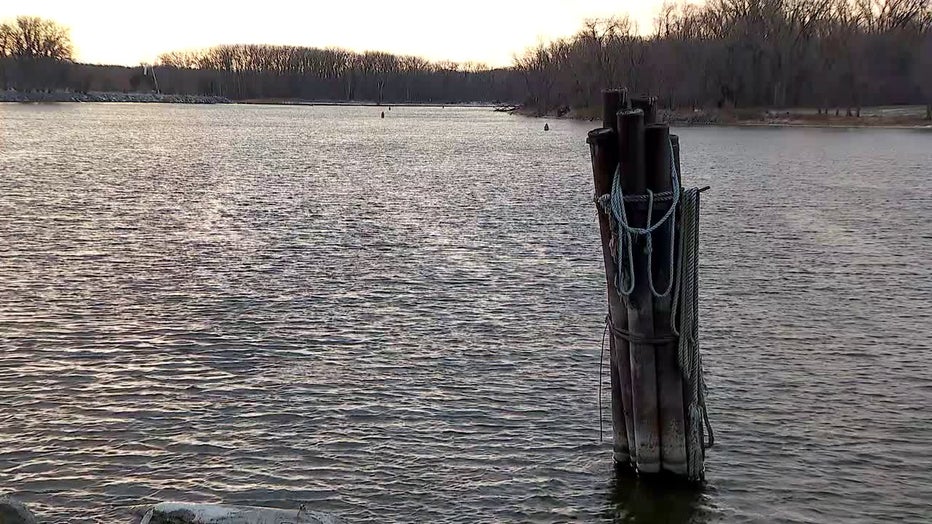
Xcel spokesmen tell us one of the units was powered down last month for scheduled refueling and maintenance, which they do every other year.
They say the other unit shut down safely about a month ago because of an equipment issue between the turbine and the electric grid.
Xcel doesn’t have a precise timeline for finishing repairs, but spokesmen tell us they expect both units back online sometime in January.
Right now, the current is strong enough that the river's all water not ice, but with both units at the plant shut down, locals expect this entire river to freeze solid.
"I anticipate there will be people driving across the river just to show it could be done," Prokosch said.
He says the warmer section of the river usually stays busy with fishing boats, even in winter.
And over the last 50 years, people have become comfortable staying on the shore all year.
"Since the nuke plant has been put in there’s been multiple marinas installed on the Mississippi River in downtown Red Wing and on the back channel and Hager City, which is going to cause some havoc on the docks," Prokosch said.
But they’re not just letting the ice come to them.
"We're installing multiple bubblers up and down the ends of the docks to keep a line of water open," Prokosch said.
Agitators keep the water churning on a smaller scale, hopefully creating a barrier around boats still in the river.
Xcel spokesmen don’t like their chances.
"We do not believe installing agitators or similar actions would be effective in this situation and do not anticipate covering the cost for these actions," they said in a statement to FOX 9.
Prokosch looks forward to proving them wrong.
Simulated nuclear incident drill at the Prairie Island Nuclear Generating Plant
PRAIRIE ISLAND, Minn. (KTTC) – The Minnesota Department of Public Safety (DPS), along with other Minnesota and Wisconsin state, county, and city agencies, will participate in a simulated emergency at the Prairie Island Nuclear Generating Plant on May 14.
The annual drill tests the capabilities of federal, state, and local agencies in the event of a plant incident. A variety of field activities will take place near the plant in Dakota and Goodhue counties.
Residents should not be alarmed by emergency responders’ presence in the area as they carry out their duties during the drill.
Agencies participating include:
- Xcel Energy, operator of the Prairie Island Nuclear Generating Plant
- Agriculture
- Emergency Medical Services Regulatory Board
- Human Services
- Military Affairs
- Natural Resources
- State Patrol
- Transportation
- Pollution Control
- Dakota and Goodhue counties
- City of Red Wing
- U.S. Department of Homeland Security (DHS)
- FEMA Region V
- Nuclear Regulatory Commission
- Volunteer Agencies
Find stories like this and more, in our apps .
Copyright 2024 KTTC. All rights reserved.

Morristown man charged with vehicular homicide in crash that killed Owatonna woman

Several Secret Service agents placed on leave over Trump’s assassination attempt, reports say

Two found dead in Charles City, police investigating

The Original Rochester Greek Fest makes its return on Friday

Housing, retail complex proposed for Rochester Technology Campus

RFK Jr. suspends his presidential bid and backs Donald Trump before appearing with him at his rally

‘The time has come’ for the Fed to soon begin reducing interest rates, Powell says

Hot Temperatures This Weekend
Latest news.

Trump coming to La Crosse on Thursday

Service Restoration honors local law enforcement with BBQ lunch

Southbound turns from I-90 to Hwy 52 reopen

KTTC Gameday: Live broadcasts of local sports on H&I

KTTC Gameday

IMAGES
COMMENTS
It is a key part of realizing Xcel Energy's 2030 and 2050 clean energy goals of cutting carbon emissions by 80 percent and 100 percent, respectively. The two generating units at Prairie Island provide zero-carbon energy to more than a million households. The plant constitutes the single largest clean energy resource that the company operates.
Prairie Island Nuclear Plant from the lake. September 29, 2021. Description: The main tower is just above the treeline, mostly concealed by it. There are a bunch of auxiliary buildings around the perimeter, A ton of power lines and line carriers are around the plant to transfer power around.
The Prairie Island Nuclear Generating Plant is an electricity-generating facility located in Red Wing, Minnesota, along the Mississippi River, and adjacent to the Prairie Island Indian Community reservation.. The nuclear power plant, which began operating in 1973, has two nuclear reactors (pressurized water reactors) manufactured by Westinghouse that produce a total 1,076 megawatts of power.
Prairie Island Nuclear Generating Plant, Unit 1. Location: Welch, MN (28 miles SE of Minneapolis, MN) in Region III. Operator: Northern States Power Co. - Minnesota. Operating License: Issued - 04/05/1974. Renewed Operating License: Issued - 06/27/2011. License Expires: 08/09/2033. Docket Number: 05000282. Reactor Type: Pressurized Water Reactor.
DNP-TIP-2023-12: 3D Virtual Nuclear Plant Tour. Xcel Energy created an immersive virtual tour of the Prairie Island plant and made it available to the public via the Internet. The virtual tour gives visitors an unprecedented level of access and understanding of the inner workings of a nuclear power plant. The tour is both visually stunning and ...
When I came to Prairie Island, the nuclear power plant, which the Tribe is literally under—about 700 feet from the nearest home—is the Prairie Island Nuclear Generating Plant and is located on the island that the Tribe is on. ... Fond du Lac Band offers tour of solar installations and green buildings July 2018. Tribal nations leading on ...
The Prairie Island Nuclear Power Plant is located on the Mississippi River near Red Wing, approximately 50 miles southeast of the Minneapolis-St. Paul metropolitan area. The facility, owned/operated by Northern States Power (NSP), has 2 units, each with a 2 Loop Westinghouse Pressurized Water Reactor. Each unit generates between 545 and 575 MWe ...
The Prairie Island Nuclear Plant is one of two contemporary plants in Minnesota. However, the location is highly contentious, standing a few hundred meters away from the Prairie Island Indian Community. Xcel Energy subsidiary company, Northern States Power, is the primary land owner. Much of the parcels to the PIIC's south is owner by the ...
Xcel Energy is developing new virtual training tools as part of a dose reduction initiative at its Prairie Island nuclear plant. NEI learns more. Staff Writer July 11, 2018. Share this article ... Previous tools used web-based applications to create virtual plant tours with links to various information sources (eg equipment sensors ...
The Prairie Island Nuclear Generating Plant hosted the Nuclear Energy Tribal Work Group (NETWG) for a plant tour and presentation March 31 in conjunction with a meeting held between the group and the U.S. Department of Energy. Members of NETWG received a presentation on the generation of nuclear power, a view of the Independent Spent […]
The Prairie Island Nuclear Plant, located in Welch, MN, at first glance, betrays expectations brought on by popular media. What the plant is expected to look like is really the cooling tower, while the actual plant is really more of a rotunda. The view of this plant is also quite polarizing, when asking a company like Xcel Energy, as opposed to ...
April 28, 2023. Former lineman turned tragic accident into passion for work zone safety. April 12, 2023. Take a virtual 3D tour of Prairie Island Nuclear Generating Plant. August 30, 2022. Smart meters helping create a more resilient energy grid. July 21, 2022.
A sign outside Xcel Energy's Prairie Island Nuclear Generating Plant along Wakonade Drive gives directions for visitors at the plant, located within Prairie Island Indian Community in Welch ...
The Nuclear Innovation and Nuclear Communications groups teamed up to win an award for their first-in-the-industry, 3D virtual tour of the Prairie Island Nuclear Generating Plant. Tours of our nuclear plants are a mainstay in educating various stakeholders about the carbon-free advantage of nuclear energy. The COVID-19 pandemic put a stop to in ...
3D Virtual Nuclear Plant Tour 2023 Top Innovative Practice Winner1 Summary Xcel Energy created an immersive virtual tour of the Prairie Island plant and made it available to the public via the Internet. The virtual tour gives visitors an unprecedented level of access and understanding of the inner workings of a nuclear power plant.
EnergyTech Staff. Bloom Energy will install its electrolyzer at Xcel Energy's Prairie Island Nuclear Generating Plant in Welch, Minnesota to help produce clean hydrogen. The electrolyzer is built on a solid oxide platform and operates at high temperatures to efficiently convert water to hydrogen. The high heat and steam from the nuclear ...
Its latest resource plan calls for extending the life of its two nuclear units at Prairie Island by 20 years, until 2053 and 2054. It wants to extend the Monticello nuclear plant's license to 2050.
Listen. Xcel Energy on Thursday said it wants to extend the life of its Prairie Island nuclear power plant by 20 years as well as significantly invest in large-scale battery storage and build two ...
2021b) available at Prairie Island Nuclear Generating Plant. Prairie Island Nuclear Generating Plant is located on the Mississippi River in Goodhue County, Minnesota, owned by Xcel Energy Corporation and operated by Northern States Power Co.- Minnesota. The plant has two 575 MWe pressurized water reactors. Unit 1
A new frontier for nuclear energy in the United States is under exploration, and Xcel Energy is at the forefront with a project t o produce hydrogen at its Prairie Island plant near Red Wing, Minnesota.. The company is work ing on an innovative pilot that will use the carbon-free electricity generated at the plant to produce hydrogen from water beginning in early 2024.
Northern States Power operated the plant safely and in a manner that preserved the public health and safety and protected the environment. Prairie Island was in the Licensee Response Column of the NRCs ROP Action Matrix for the last quarter of 2023. No cross-cutting themes were identified, the following cross-cutting attributes were associated
Published November 30, 2023 10:03pm CST. Environment. FOX 9. Units down at Red Wing nuclear energy plant. For the first time in 25 years, both units at Prairie Island nuclear energy plant are down ...
Published: May. 13, 2024 at 2:32 PM PDT. PRAIRIE ISLAND, Minn. (KTTC) - The Minnesota Department of Public Safety (DPS), along with other Minnesota and Wisconsin state, county, and city agencies, will participate in a simulated emergency at the Prairie Island Nuclear Generating Plant on May 14. The annual drill tests the capabilities of ...